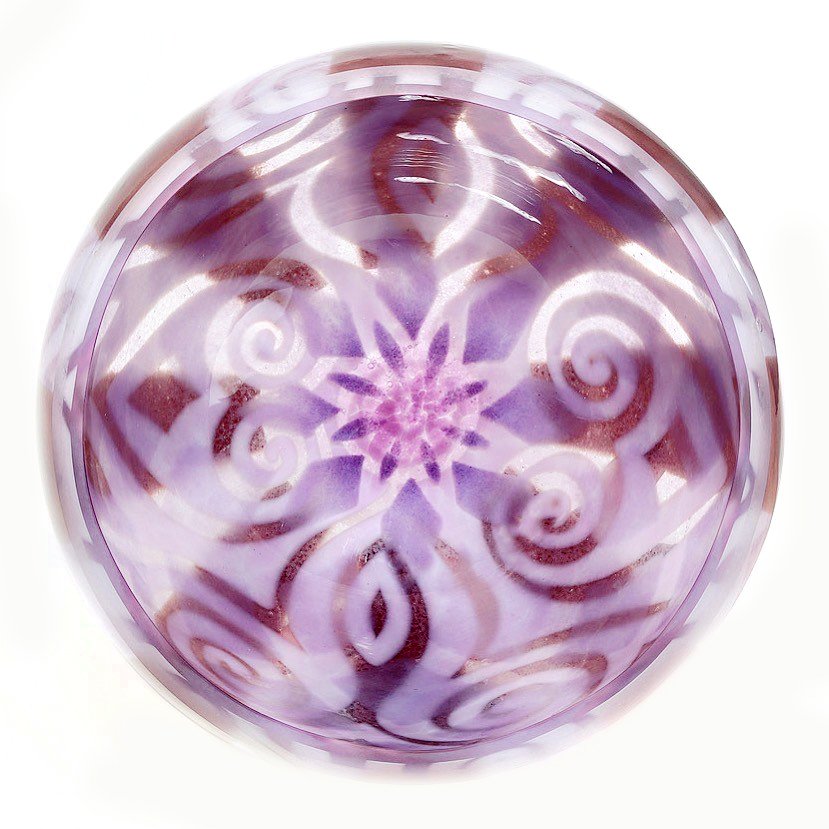Next Month the ccbc gallery will host Looking Glass: Apertura Series, an exhibition of fifteen new cut and polished sculptural works by glass artist Laura Murdoch. Laura has graciously shared with us a glimpse into the lengthy and labour intensive process that defines much of her work. Read on to learn more about Laura’s process and stop by between August 13th and September 24th to see the Laura’s newest series of glass works.

For Looking Glass: Apertura Series, I create simple straightforward vessel blown glass shapes onto which I “paint” layers of intricate and exuberant patterns. I do not just paint these patterns onto to the glass, but within the glass using sand-carving. Drawing patterns on both the inside and outside of the vessel draws the eye of the viewer to look closely at what is inside. Through the “apertures” of the patterns on the outside the internal patterns are visible. This is a departure from my previous work in terms of the number of layers, colours and patterns. This process is fraught with risk and also exhilaration. There have been many accidents and many tears, but the joy I feel when it all comes together is worth the high price.
I accomplish these pieces by building layers of clear glass, each separated by a fine layer of colour, using the ancient “graal” technique (a bubble of glass formed with a layer of coloured powder on the outside, open on one end, and typically the shape of an egg). The vessel is cooled to room temperature and manipulated with various tools to “mark” the powdered coloured glass on the exterior. Some of the powder is then removed to expose the glass underneath. Where the exterior colour is removed from the outer layer, the viewer can glimpse the interior pattern through the apertures of the second.
“The joy I feel when it all comes together is worth the high price”
I repeat this layering process several times, cooling the growing bubble each time and adding a new pattern to the tapestry. In the hotshop, the layering process may take up to several weeks, months, or years after the initial firing, before I choose to complete the object. Usually, because the amount of glass on the pipe becomes prohibitive in terms of its weight, multiple layers of colour and patterning are encased inside the glass.
I migrate back and forth between the high pressure environment of hot fluid glass to the more precise and controlled cold shop, where the patterning takes place, each time adding an incremental layer. The work in each studio is directed by the other, the hot-shop emphasis being on hand made and the cold-shop emphasis being on machine work.


These particular pieces that may have 4 or 5 layers are called the Apertura Series. I leave these pieces thick and heavy and cut through the shape to reveal the layered inside; like the rings of a tree. In profile, the pattern markings are windows through which to glimpse the other layers hidden inside, hence the term “apertura”. My vessels unfold inwardly. While the outside layer is the last to be created, it is the first to be seen and acts as a lens through which you can see in to the next layer.

